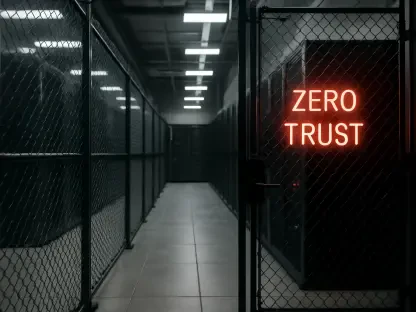In an era where cyber threats evolve at a relentless pace, staying ahead of malicious actors has become a defining challenge for organizations worldwide, and the Black Hat USA conference serves as a vital forum for exploring innovative strategies and confronting the most urgent risks. A cornerstone event for cybersecurity professionals, researchers, and industry leaders, this year’s discussions, captured through extensive coverage by SiliconANGLE and its livestreaming studio theCUBE, highlight actionable approaches to building resilient, proactive defenses. As attackers exploit trust, identities, and legitimate tools with increasing sophistication, the need to shift from merely responding to incidents to preventing them has never been clearer. Economic pressures and constrained resources further complicate the landscape, pushing security teams to balance innovation with fundamental principles. This article delves into the critical insights from Black Hat USA, offering a roadmap for organizations to strengthen their security posture in a high-stakes digital environment where the cost of failure continues to rise.
Building a Strong Foundation with Visibility and Discipline
The emphasis on visibility as the bedrock of effective cybersecurity resonated strongly throughout Black Hat USA sessions. Understanding the full scope of an organization’s assets—ranging from physical devices to cloud-based workloads and IoT systems—stands as the essential first step in identifying potential vulnerabilities. Without this comprehensive awareness, efforts to allocate resources or address weaknesses remain haphazard at best. Industry experts like Liz Morton from Axonius Inc. underscored the importance of adhering to core practices and focusing on continuous improvement rather than being swayed by the allure of cutting-edge but unproven technologies. This disciplined approach ensures that security programs are built on a solid base, capable of withstanding the evolving tactics of adversaries who often target overlooked gaps in infrastructure.
Operational discipline also plays a pivotal role, particularly when budgets are tight and every expenditure faces intense scrutiny. Security leaders frequently find themselves in the position of needing to justify investments to stakeholders who may not fully grasp the technical intricacies of cyber defense. Ryan Knisley from Axonius highlighted how addressing specialized areas, such as securing IoT devices in healthcare, demonstrates the far-reaching importance of visibility in protecting critical sectors. Meanwhile, cautionary notes from figures like Mike Nichols of Elasticsearch remind teams to critically evaluate emerging tools like agentic AI, ensuring they understand both the benefits and limitations before integration. This focus on visibility paired with pragmatic decision-making equips organizations to navigate resource constraints while maintaining robust security.
Reinforcing Defenses Through Identity and Zero-Trust Models
Identity and access management emerged as a central pillar of modern cybersecurity strategies at Black Hat USA, with zero-trust frameworks taking center stage. As ransomware tactics shift from encryption to data theft, controlling who—or what—can access systems becomes a critical line of defense. Traditional perimeter-based security models no longer suffice in an environment where attackers frequently exploit compromised identities. Leaders from Zscaler Inc. and Delinea Inc. illustrated how zero-trust principles operate on the assumption that every access request could be malicious, requiring verification based on identity and context. This paradigm shift is vital for mitigating risks in a landscape where both human and machine interactions can serve as entry points for breaches.
Technological advancements are enhancing the ability to secure identities, as highlighted by various Black Hat USA speakers. Jon Kuhn from Delinea pointed to AI-driven solutions like Iris AI, which monitors user behavior in real time and can automatically sever connections that exhibit suspicious patterns. Complementing this, Ted Shorter of Keyfactor Inc. brought attention to the growing significance of machine identities, which are essential for securing devices, applications, and workloads in increasingly interconnected environments. These combined perspectives reveal a holistic approach to identity management that addresses diverse threat vectors. By prioritizing access controls and leveraging intelligent tools, organizations can significantly reduce the likelihood of unauthorized access driving devastating attacks.
Countering Stealthy Threats with Proactive Measures
The sophistication of modern cyber threats, particularly tactics like “Living Off The Land” (LotL), was a pressing concern at Black Hat USA, underscoring the need for proactive rather than reactive defenses. In LotL attacks, adversaries use legitimate system tools to operate undetected, often remaining dormant for extended periods before launching their assault. This stealthy approach challenges traditional detection methods and demands a focus on prevention. Martin Zugec from Bitdefender discussed how platforms like GravityZone PHASR work to harden systems by disabling unused components of commonly exploited tools, thereby shrinking the attack surface. Such preventive strategies mark a crucial evolution in security thinking, prioritizing the anticipation of threats over scrambling to respond after the fact.
Beyond technical measures, the concept of trust emerged as a vital asset to safeguard, especially in the context of technology and vendor relationships. Grant Bourzikas of Cloudflare Inc. noted how attackers manipulate trust through deceptive tactics like malicious link wrapping, exploiting the confidence users place in familiar systems. Transparency and responsiveness during incidents, particularly from vendors, become essential for maintaining credibility and minimizing damage. This dual emphasis on bolstering technical defenses and nurturing relational trust paints a comprehensive picture of proactive security. By addressing both the mechanisms of attack and the human elements of confidence, organizations can better position themselves to thwart adversaries who rely on exploiting these vulnerabilities.
Balancing Innovation with Economic Realities
Economic constraints are profoundly shaping cybersecurity strategies, a recurring theme echoed by many at Black Hat USA. With budgets often under intense scrutiny, security leaders face the daunting task of securing buy-in for necessary investments, sometimes needing to influence decisions beyond their direct sphere of responsibility. This environment reinforces the importance of focusing on foundational elements like visibility, identity management, and basic operational hygiene rather than diverting resources to experimental or overly complex solutions. Insights from experts like Liz Morton highlight how demonstrating tangible value to stakeholders becomes a critical skill, ensuring that essential tools and practices receive the support they need despite fiscal challenges.
The allure of emerging technologies, particularly AI, also demands careful consideration amidst these economic pressures. While such innovations hold significant potential to enhance security capabilities, Black Hat USA discussions stressed the importance of governance to prevent unintended consequences or vulnerabilities. A balanced perspective emerged, advocating for the adoption of new tools only when grounded in disciplined fundamentals. This cautious yet forward-looking approach ensures that organizations can harness the benefits of technological advancements without compromising their core defenses. By aligning innovation with pragmatic resource allocation, security teams can adapt to evolving threats while navigating the realities of limited budgets and heightened expectations.
Charting the Path Forward for Cyber Resilience
Reflecting on the insights shared at Black Hat USA, it became evident that the cybersecurity landscape has reached a turning point where proactive strategies take precedence over reactive firefighting. The discussions illuminated how visibility provides a critical lens for understanding and protecting assets, while identity management through zero-trust models fortifies defenses against insidious threats. Proactive measures, coupled with a commitment to preserving trust, address the stealthy tactics of modern attackers who exploit legitimate tools and relationships.
Looking ahead, organizations must translate these lessons into actionable steps by prioritizing foundational security practices and embedding prevention into their core operations. Investing in visibility tools to map out assets comprehensively, adopting zero-trust frameworks to secure access, and fostering transparency with stakeholders and vendors stand as immediate priorities. Additionally, a measured approach to emerging technologies like AI can unlock new defensive capabilities if paired with robust oversight. The path to resilience lies in blending these insights into a cohesive strategy that anticipates risks, optimizes limited resources, and builds trust across all layers of the digital ecosystem.









